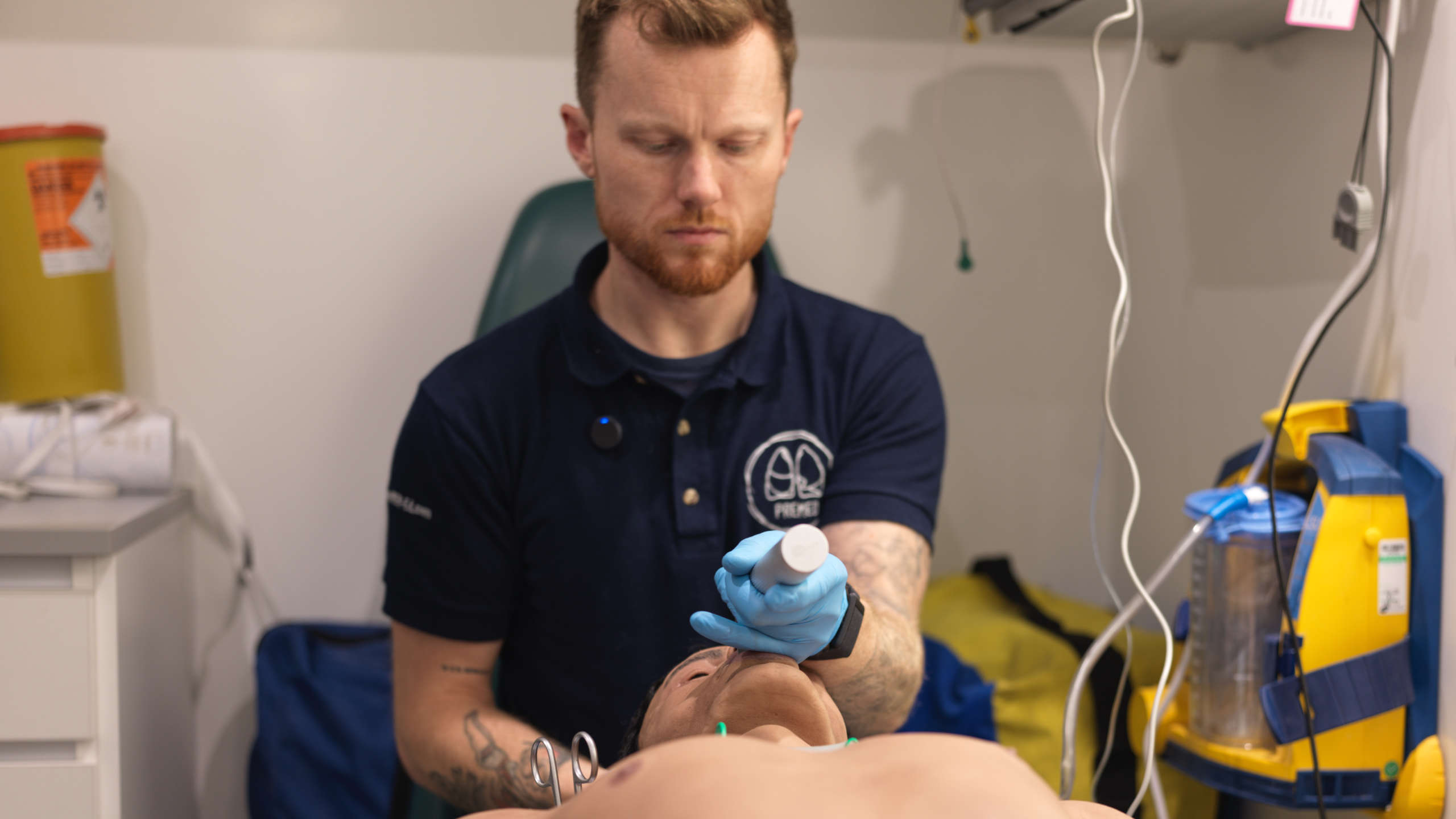
Foreign Body Airway Obstruction
Pre-hospital CareUse this resource in conjunction with your real-world training

Experience Summary
In this 360-degree video, observe the pre-hospital team demonstrate the steps in assessing and managing a foreign body airway obstruction (FBAO).
A FBAO is a life-threatening emergency that occurs when an object partially or completely blocks the airway, preventing effective ventilation. Immediate recognition and prompt intervention are essential to prevent hypoxia, loss of consciousness, or death. FBAO can occur in all age groups but is particularly common in young children, older adults, and individuals with neurological or swallowing disorders.
Clinical Context
The assessment begins with identifying signs of airway obstruction, which can be either partial or complete:
- In partial obstruction, the patient may be able to cough, speak, or breathe, though with difficulty. Signs include noisy breathing (stridor), clutching at the throat, and visible distress.
- In complete obstruction, the patient cannot speak, cough, or breathe, and may exhibit the universal choking sign (hands around the throat), cyanosis, or rapidly lose consciousness if not treated.
Management follows Basic Life Support (BLS) principles and depends on the severity of the obstruction and the patient’s level of consciousness.
Conscious Adult or Child (>1 year) – Severe Obstruction:
-
Encourage Coughing if the patient can still cough effectively.
-
If coughing is ineffective and the obstruction is severe:
- Deliver 5 back blows between the shoulder blades using the heel of your hand.
- If back blows are unsuccessful, deliver 5 abdominal thrusts (Heimlich manoeuvre). Stand behind the patient, place a fist just above the navel, grasp it with the other hand, and pull inwards and upwards sharply.
-
Alternate between back blows and abdominal thrusts until the object is expelled or the patient becomes unresponsive.
Unconscious Patient:
- Call for emergency help immediately.
- Start CPR with chest compressions. Do not perform a pulse check—assume cardiac arrest due to hypoxia.
- Before giving rescue breaths, open the mouth and look for a visible obstruction. If seen, carefully remove it. Do not perform blind finger sweeps.
- Continue CPR until the airway is cleared and normal breathing returns or emergency services arrive.
Infants (<1 year):
- Deliver 5 back blows, followed by 5 chest thrusts using two fingers on the lower sternum, with the baby supported face-down and head-lowered.
Throughout, reassessment is essential, and once the object is expelled or the patient regains consciousness, they should be monitored for airway swelling, aspiration, or other complications.
Learning Outcomes
- Understand the steps in the safe assessment of a patient with an airway obstruction.
- Understand how to make a diagnosis of foreign body inhalation causing airway obstruction.
- Observe the management steps in this case of foreign body airway obstruction.
External Resources
